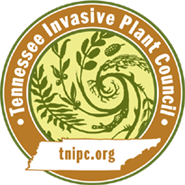Conium maculatum L.
Poison Hemlock
Similar Species
May be confused with the following native and/or non-native species.
Landscape Alternatives lists native horticultural substitutes
|
Cicuta maculata
|

Description
Height
Mature biennial stems can reach heights of 9 feet (3 m), but usually are observed to be 4-6 feet (1.5-2 m) tall.
Stem
Stems are smooth to glaucous (waxy coating that rubs off), hollow, and purple spotted.
Leaves
Leaves are large and alternate with leaf blades up to 16 inches (40 cm) long and 2-4 times pinnately compound making them appear finely dissected. Lower leaves have long petioles with an inflated sheathing base. Upper leaves are short petiolate to sessile.
Flowers
Individual flowers are small and organized into large, terminal, compound umbels. Petals are white and rounded to notched at the tip; sepals are absent.
Fruit
Fruits are about 0.1 inch (2.5-3.5 mm), ovate-elliptic, dark brown with pale ribs.
Images
Photo: Steve Dewey, Utah State University, Bugwood.org
More images of Conium maculatumLife History
Poison Hemlock is in the Apiaceae Family. It lives up to its name as all parts of the plant contain alkaloids poisonous to humans and livestock. No parts of this plant should be ingested. It is believed that the Greek philosopher Socrates was poisoned with this species. Plants occurring around fences rows of pastures should be removed.
Habitat
This plant can tolerate a variety of habitat types, including waste areas, roadsides pastures, etc., but it is most likely to be found along riparian corridors and wetlands. It is classified as a facultative wetland plant (FACW – 67-99% probability of occurring in wetland) throughout the southeastern U.S.
Origin and Distribution
Poison hemlock is native to Europe, Asia and Africa, but has been widely introduced and naturalized across the U.S. Other states where it is considered a noxious weed: CO, ID, IA, NV, NM, OH, OR, WA.
Management Recommendations
Herbicidal Control
Foliar Spray Method
Glyphosate is effective on populations where mechanical control measures are not feasible or are impractical. Apply a 2% solution of glyphosate and water plus a non-ionic surfactant using a tank or backpack sprayer to thoroughly cover all leaves. Do not apply so heavily that herbicide drips off the leaf surface. Glyphosate is a non-selective herbicide requiring caution not to spray non-target species. Refer to manufacturer’s label for specific information and restrictions regarding use. Glyphosate products approved for wetland use should be used in wetland areas.
Mechanical Control
Hand Pulling: This method of control may be effective for small populations of Poison Hemlock. Hand-pulling is an extremely effective method of reducing population and seed productivity. Hand-pulling of plants can be done during most of the year. If plants have fruits present, they should be bagged and disposed of to prevent seed dispersal. Care should be taken to minimize soil disturbance.

